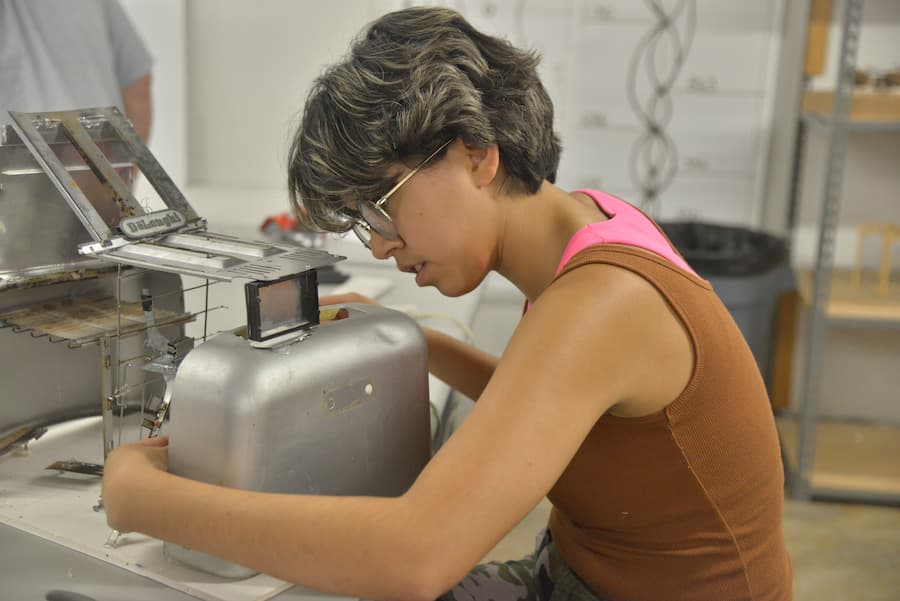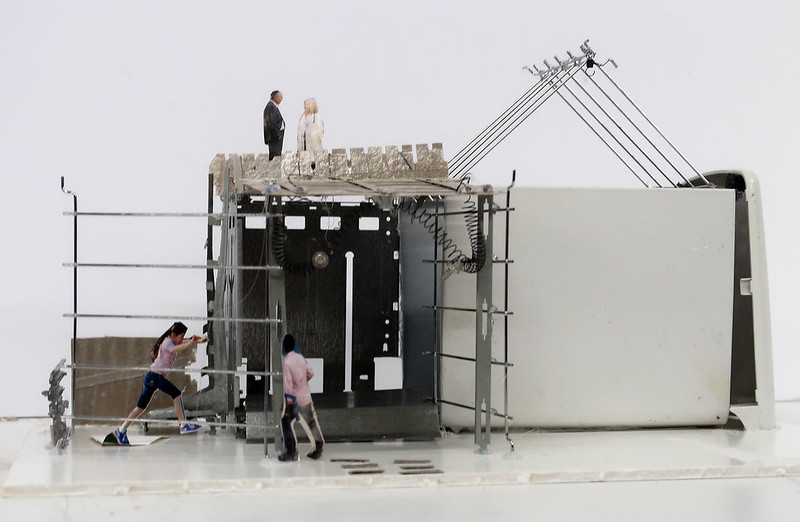Posted on June 23, 2025 by Sean M. Wood

A summer camp participant with their model.
Professor Stephen Temple, M.S.Arch introduces students to his “toaster project” by first making toast.
“We make toast and we put butter and cinnamon on it, to present the object in it everyday use,” the professor of Architecture and Planning said.
For more than 30 years, Temple has used toasters as tools for testing students in creating model environments. He started using them with the advent of computer-assisted design. In his classes, students disassembled donated, nonworking toasters and used the parts to create environments.
The environments were first created digitally. Students had to design for the real world—with parts from a toaster—to create two spaces that would interact with each other, typically through a doorway, using every piece of the machine. Students would then build what they designed in the digital world as a test of the digital design thinking.

“The digital versions never worked,” Temple said, “Because the digital world has no gravity and no up-and-down, and no sort of scale.”
Fourteen years ago, he began using the toaster project in summer architecture camps for high school students.
“Kids love to take things apart,” Temple said. “When they’re toddlers, they love to put things inside of other things. This kind of play continues into their young childhood, and if you give older students things to take apart, they’re thrilled. A toaster doesn’t have many difficult things to take apart, so unbuilding it is just four screws and a few tabs.” Making models of environments out of these parts requires transformative thinking.
Students also watch films about architecture, take field trips to design firms, and participate in other hands-on projects, such as building arches out of bricks. The camp is designed to either confirm architecture and engineering as viable career options for some students or rule them out for others.
“I have had students who move on to another field after a year of full-time school, but I was convinced students can figure it out after a couple of weeks,” Temple said. “An architecture career is a career of engagement. We show them the toaster and its everyday purpose, and they transform it into something completely different. It’s much the same way architects transform raw materials into buildings.”
Thanks to Goodwill San Antonio for donating the toasters to Klesse College for this educational initiative.

